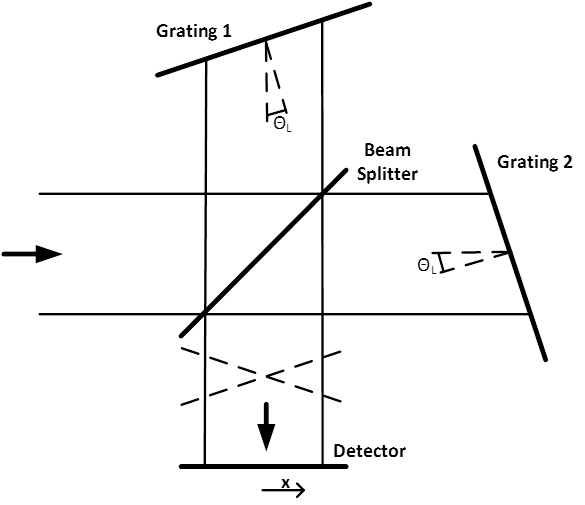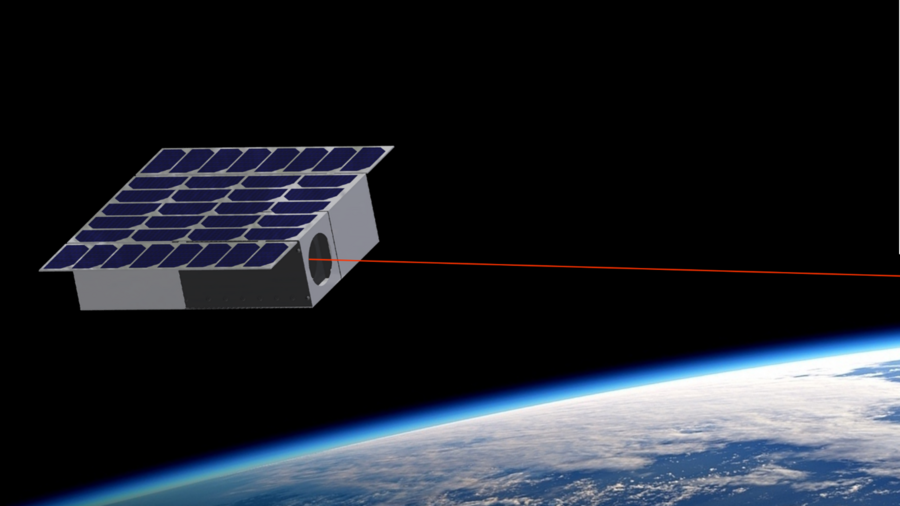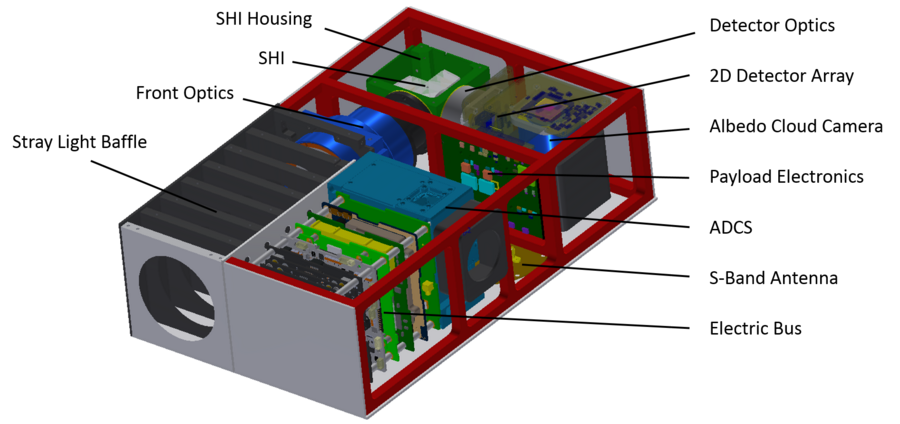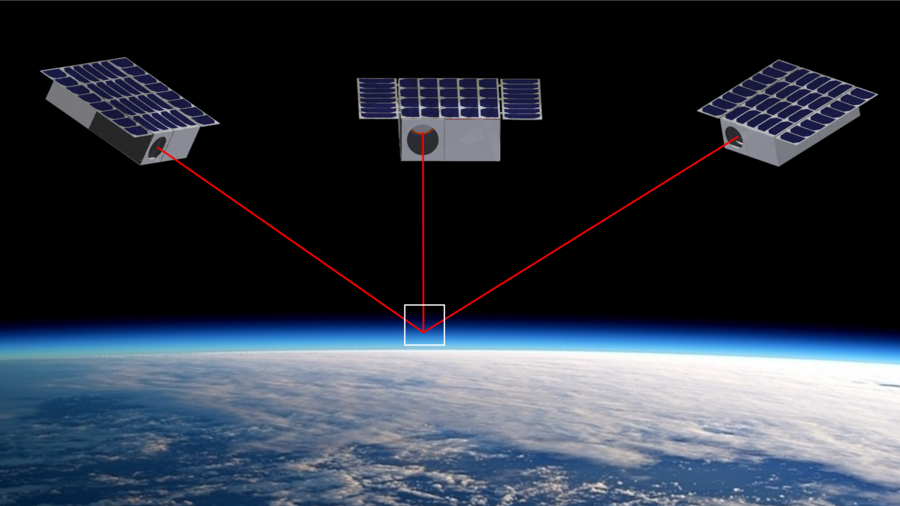AtmoCube - A small satellite for atmospheric research
Mission Objectives
The Institute of Atmospheric Research at the University of Wuppertal and the Research Centre Juelich are developing a small satellite for climate research to perform temperature measurements of the middle atmosphere to provide scientific data for climate models and for gravity wave characterization. Based on a 6-unit CubeSat, the payload consists of a small interferometer for measuring the emissions of the O2 A band at 762 nm. These data will be used to derive temperature distribution and dynamical wave structures at the same time.
Spatial Heterodyne Spectrometer (SHS)
The SHS is a relatively new instrument type, which can be described as a combination of a grating spectrometer and a Fourier-transform spectrometer. Its visual appearance is similar to a Michelson Interferometer, where the mirrors in the arms are replaced by angled gratings. The figure below illustrates the concept of the SHS. Light enters the system from the left and gets divided in a beam splitter (BS). Each beam diffracts at a grating (G1, G2), which is tilted with the Littrow angle.

SHS concept
Scientific publication:
Kaufmann, M., Olschewski, F., Mantel, K., Solheim, B., Shepherd, G., Deiml, M., Liu, J., Song, R., Chen, Q., Wroblowski, O., Wei, D., Zhu, Y., Wagner, F., Loosen, F., Froehlich, D., Neubert, T., Rongen, H., Knieling, P., Toumpas, P., Shan, J., Tang, G., Koppmann, R., and Riese, M.
A highly miniaturized satellite payload based on a spatial heterodyne spectrometer for atmospheric temperature measurements in the mesosphere and lower thermosphere,
Atmos. Meas. Tech., 11, 3861-3870, doi.org/10.5194/amt-11-3861-2018, 2018.





